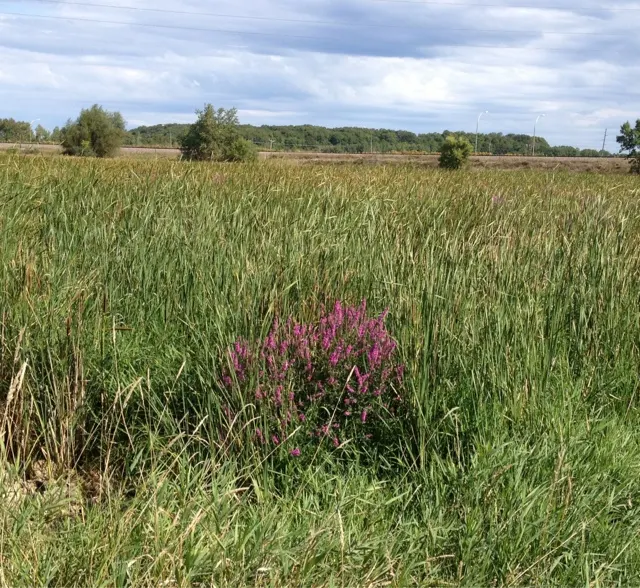Cardinal Matters
I'm well aware of the disdain (see Garden Rant) and the rhetoric (see Michael Pollan).
Still. As I look upon this cardinal flower, Lobelia cardinalis, I immediately, emotionally respond to its presence.
On the other hand is purple loosestrife, Lythrum salicaria. It's pale purple wands are pretty, especially so en masse, which is often how one finds it, but hardly stunning. Is this a learned response? If purple loosestrife was a native plant, would I espouse it's regal nature?
I do not know. What I do know is that seeing cardinal flower marsh-side is rare, yet finding purple loosestrife is becoming exceedingly common in Hennepin County ditches, wetlands, and cloverleaf water basins.
Rex likes the purple loosestrife, he says it's pretty where the marsh is just a wash of green. He believes the loosestrife cannot outcompete the cattails and rushes. But I doubt that, as evidenced by New York State's marshes and wetlands. Those must have once looked like Minnesota's, but now many are nearly a monoculture of purple loosestrife. After bloom in July and August, the wetland becomes a wash of dismal brown, whereas Hennepin County wetlands offer a kaleidoscopic interference of green and gold.
I'm not sure people care all that much. Like Rex said, it's pretty, and it's spread appears incremental, hardly noticeable. The government has policy, it is a known invasive, it is illegal to harbor it on private property (this is where tongues tingle with politi-lingual fascism), and it's hard to control. And maybe, maybe, an appreciation for rarified things in life is an elitist affair. And maybe people, humanity, has a thing for the strong, aggressive, and adaptable in life. Maybe.





Comments
Post a Comment
Go ahead and comment! I will moderate and delete the spam. Thx